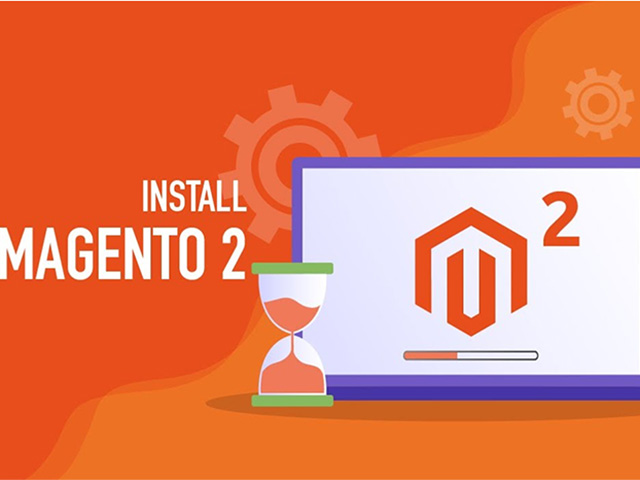Magento Store Builder is a system that allows online stores to have flexible shopping, and control over store appearance, content, and store performance. Magento has very powerful marketing tools that optimize your site for search engines.
To use Magento Store Builder, you must first install it so that you can use its numerous features.
Related posts: What is Magento?
To do this, you can first install it on the localhost to test the features and how to use it. However, the installation process of this store builder is a little different and more difficult than other store platforms, and you may face some errors during its installation. The installation of Magento on localhost may take some time if you don’t have enough experience in this field.
But do not worry, in this Magento 2 tutorial article, we are going to describe how to install Magento 2 which is the latest version, step by step.
How to install Magento 2 on localhost, server, or host
You have three methods for installing Magento 2 on localhost, server, or host. The first method is to use a command line. The second method is through Git Repository and the third method is to download the Magento file that we suggest you download the latest version of Magento 2.
To install Magento 2 on localhosts, a series of prerequisites are required, and your system or your server must have these features. Also, if you are using a Linux operating system, you must have read and write access to the files.
The steps of Install Magento 2
- Download the new package or version of Magento 2.
- Upload the downloaded file to your server.
- Update permissions.
- Run the Magento Setup wizard.
- Complete the installation process.
Download the new package or version of Magento 2
You can also download the latest version of this store builder from Wegento.com.
Upload the downloaded Magento file to the server
After downloading the package, you must upload it to the server or host or upload it to the appropriate folder on localhost. To upload the Magento file, you can use tools such as FileZilla or use the server’s tools. After uploading, unzip the files in the Public_HTML folder.
For a dedicated server, you can use the commands below.

Update permissions
Add the write permission for var-app / etc-pub folders by writing the commands below on the command line.

If you don’t add the permissions, you may face possible errors.
Run the Magento Setup Wizard
A Setup Wizard is a multi-page form that helps you to set up the Magento step by step. You can’t leave a page blank before you fill in all the required information on each page.
Do not worry, the installation steps with this form are very easy, if you had any problems in these steps, please write the problems or errors in the comments section as we can offer you solutions.
To view this form, first enter the following address in your browser’s address bar:
http://www.example.com/magento2
And if you want to do the installation steps in Localhost, you must enter this address in your browser:
localhost / magento2
Note that example.com is the domain name of your store and magento2 is the name of the folder in which you extracted or decompressed the Magento package.
Magento Installation Form Welcome Page
After doing this, the Setup Wizard form will be displayed to you according to the below image.

On this page, which is a kind of welcome page, you have to click on the Agree and Setup Magento button to be directed to the next step similar to the below image.

Preparation page or review of prerequisites for installing Magento
On this page, the necessary prerequisites for installing Magento 2 on your server or host or localhost will be examined. If there is a problem, as shown in the below image, the errors will display with a red cross. To fix these errors, there are given explanations to solve the problem.
For example, the image below, suggests that you need to enable two extensions. So if an error is displayed, you need to fix it before proceeding.

Click on the Next button to continue the installation process.
Add a database
In this step of the Magento 2 installation tutorial, you need to create a database for this store builder so that you can save your store information.
Enter the created database information according to the below image, which includes the database name, username, and password. Finally, click the Next button.

Web configuration
In this step of setting up Magento 2 on Localhost, you must enter the following information to access the two sections, the first is the main page of your store and the second is the management or admin panel.

Customize your store
In this step, according to the below image, you can specify the type of store currency, time zone, and language of your Magento 2 store.

- From your default time zone list, click on your store time zone.
- From the default list of store currency, click on the currency in your store.
- From the list of default languages in the store, click on the language you want to use in your store.
You can also select the list of Extensions you want to enable or disable by opening the Advanced Extensions Configuration tab.

After determining the above items, click Next to be directed to the next step of the Magento 2 installation tutorial on Localhost.
Creating admin account
In this step, you must enter your account information to have access to your admin panel in the future.
Note that the email you enter in this section is registered in your database and is used in cases such as forgetting the password, so enter the correct and accessible email.
Also, save the admin username and password in a text file as they will be used to log in to the Magento Store builder in the future.

Now enter this admin panel information to create your account.
- New Username
- New Email
- New Password
- Confirm Password
- After filling in the above items, click Next to be directed to the last step.
The final step of Magento installation training 2
Unlike the previous version of Magento, in this version, the steps of installing the database and transferring information have been moved to the last step to avoid wasting time in each step. Also, the progress bar during installation helps you can see the installation steps of Magento.

After completing all the steps mentioned above, click on Install Now button. If your installation is successful, you will encounter such a page.

Check the installation result of Magento 2
To see the result, enter the two related addresses with the main page of the store and the admin panel on your browser page. You should see similar pages as shown below.


We have reached the end of the Magento 2 installation tutorial. We have tried to provide our best tutorial for you dear friends. You will usually encounter problems and errors during installing this store builder. In case of any problems, you can send us your problems through the comments form of this training so that we can help you.




